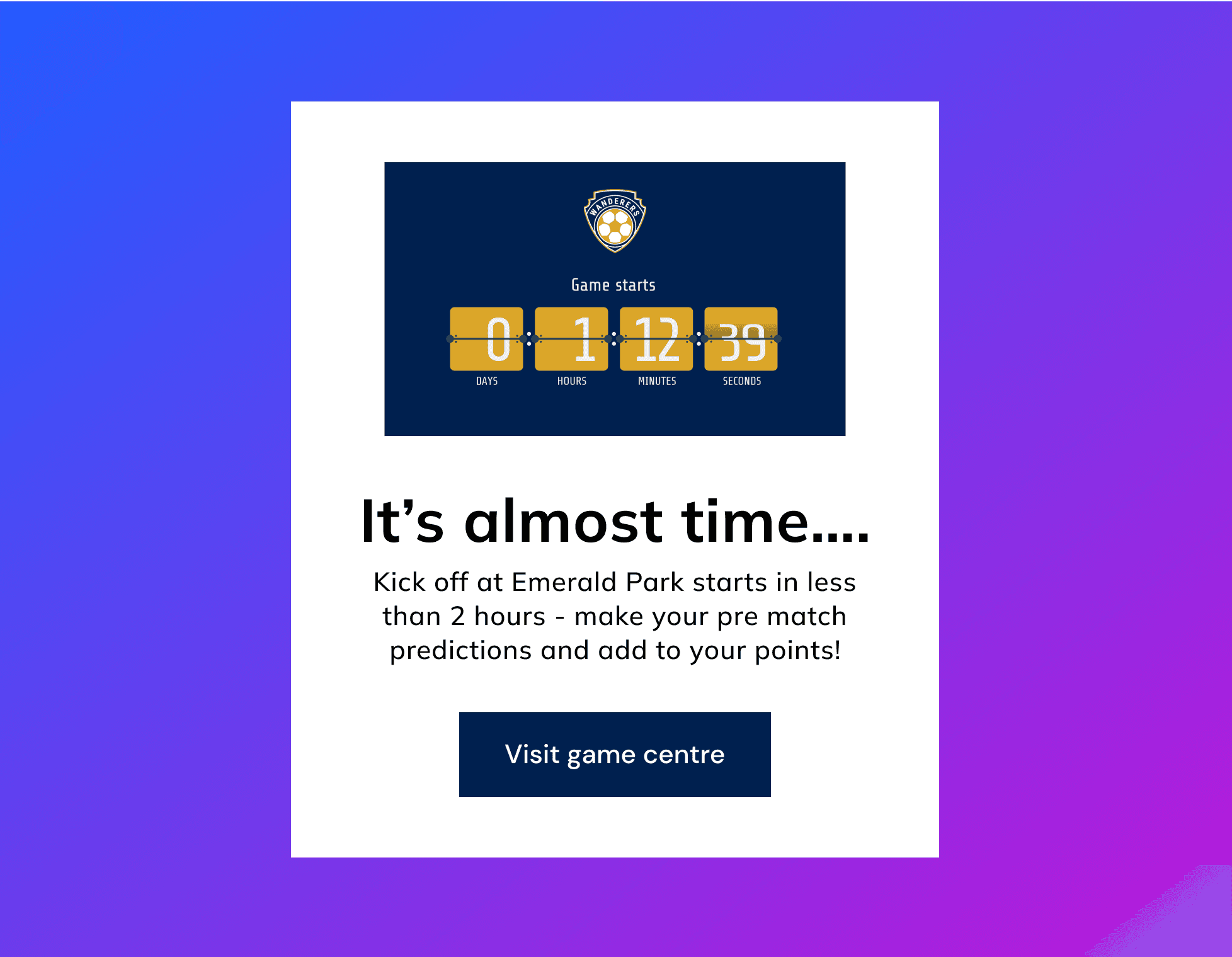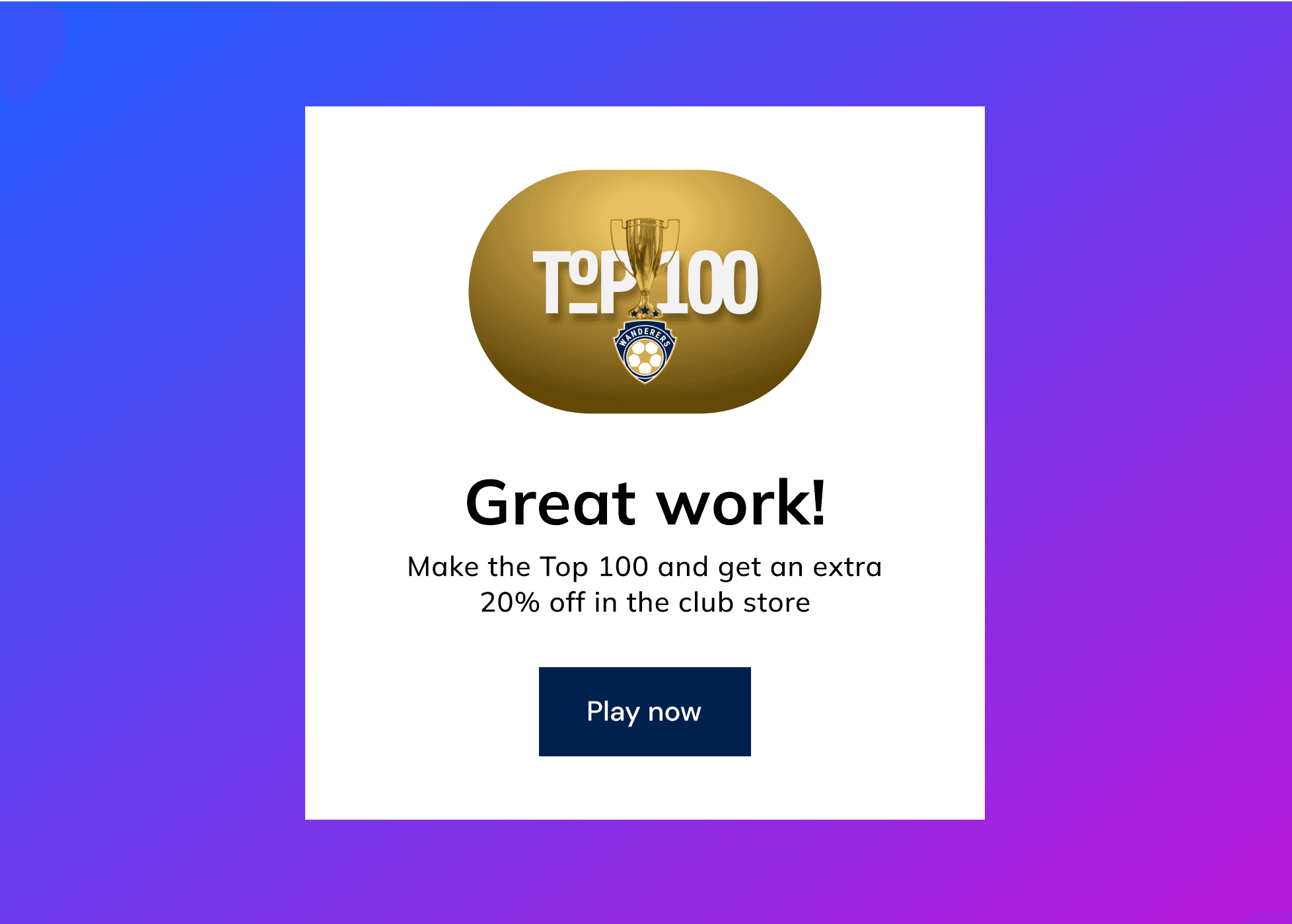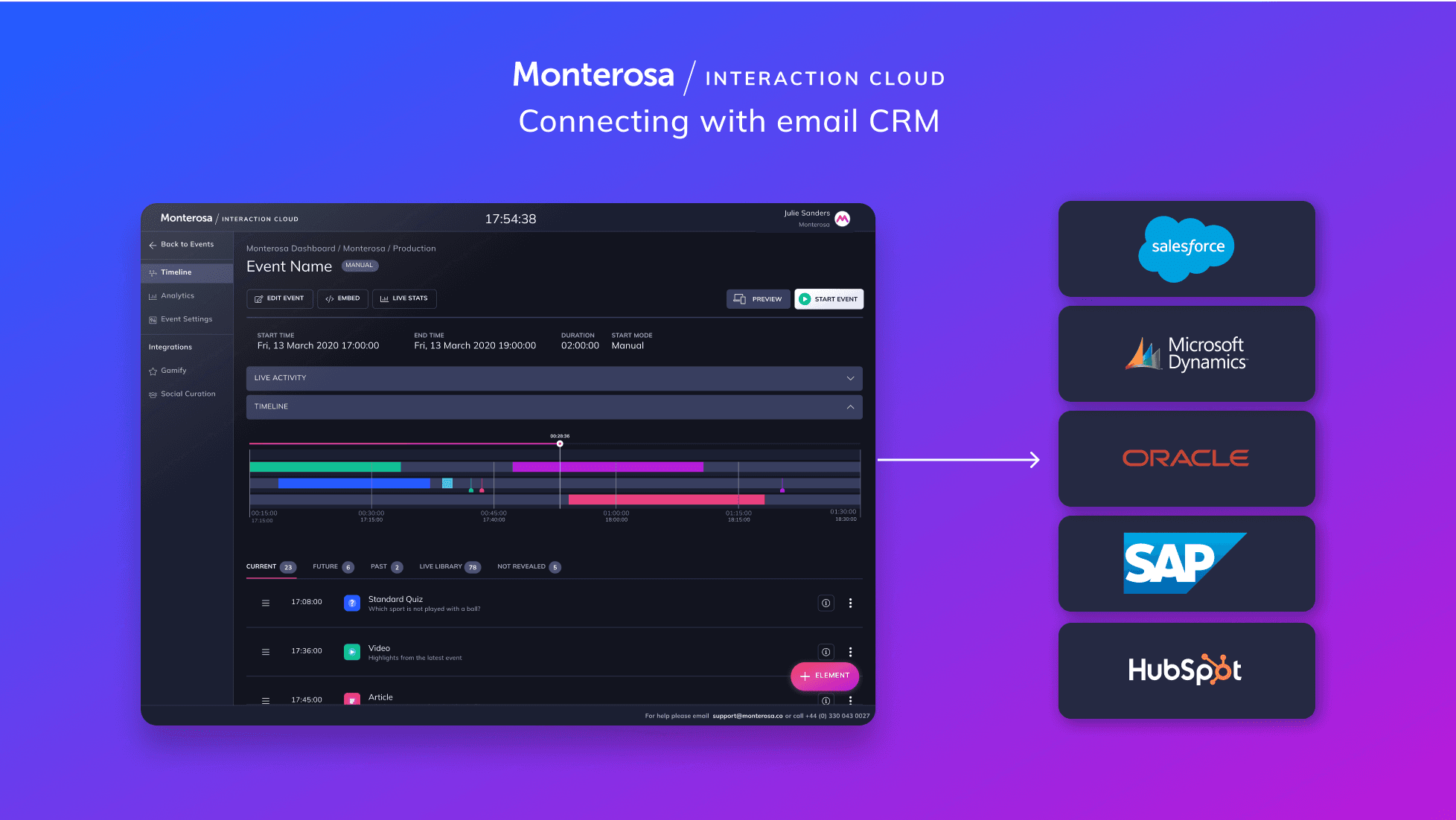by Holly Tyler, Marketing Director
Jun 2023
You’ve created your fan engagement Experience, it’s scheduled and ready to go live on the day.
Time to relax? Not quite. Ensuring you have timely, compelling promotion is essential to achieve success.
There are ~4.3bn people worldwide using email daily. This is expected to rise to 4.6bn by 2025. While it isn’t the only way to communicate, email marketing remains a highly effective method of regaining attention, encouraging your fans to interact more regularly, thus deepening their affinity with your brand.
The deeper the commitment, the higher the likelihood of purchasing tickets, merchandise, and partner products.
Fostering loyalty and commitment on your own digital platforms helps to achieve predictability. Your audience operating on your terms will reduce the risk associated with relying on the whims of social media companies to prioritise your content.
Here are some practical examples of how you can use engagement data to generate interest from audiences, encouraging their continued participation.
Welcome emails

Why they work: The average open rate for welcome emails is 50%, making them 86% more effective than standard emails.
With all this attention, welcome emails give you the opportunity to make a great first impression and educate your audience.
How to make them work for you:
Focus on what you want your audience to do - remind them about upcoming games, offers and events they can participate in
Not overselling - a welcome email should be just that. It should make users feel positive about signing up and not overloaded with information
Reminders

Why they work: People are busy. And even some of the most die-hard fans forget an upcoming game now and again.
Emails can act as a positive reminder, resulting in fans being more likely to engage more often. And ensuring that your fans engage more often means more time spent with your digital properties.
How to make them work for you:
Timing is everything - Sending out the email in the morning of the event gives fans enough time to get involved but not so much time that they forget altogether
A clear CTA - To make sure that fans behave as you want them to, a clear call-to-action is essential
Building a sense of urgency - Devices like a countdown timer to the game start help drive a sense of urgency and encourage fans to interact
Celebrate progress

Why they work: For the occasional fan, a performance summary can help to incentivise them to come back. By sharing updates on their performance in a quiz, predictor or game and even how they rank in the leaderboard, you can fire up your fans’ competitive sides and get them coming back to improve their scores.
By having rewards or prizes for the top leaderboard spots will intensify the incentivisation and you can start building an army of loyal fans, in no time.
How to make them work for you:
Public feedback - i.e. leaderboards, results. This relates to anything that is experienced collectively. It is particularly effective in building a sense of community whilst driving a sense of competition and achievement.
Private feedback - i.e. rewards, discounts. This is all about personal gratification that isn’t shared with a group. Gaining something such as unlocking exclusive content by taking part is a perfect example of how to drive repeat interaction
How Monterosa / Interaction Cloud can help

To help you manage this process, the platform can integrate with your email platform or CRM, to send triggers when a user signs up. These signals will notify your existing system, so you can keep full creative control over the emails you send out.



















